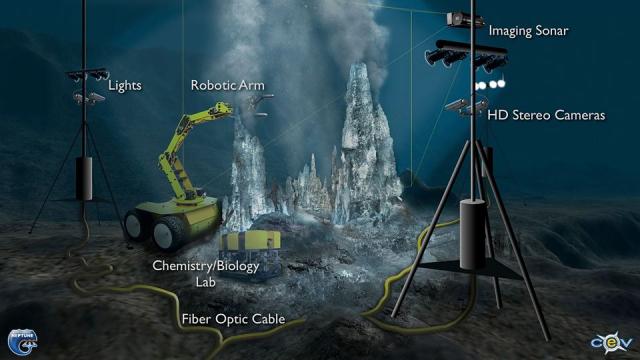Rona
A key to integration and synthesis of collaborative multidisciplinary oceanographic studies between PIs is collocation of sensors. However, collocation of sensors when performing our studies on ocean ridges is one of the biggest challenges that we face. For example, an apparent schism exists between those who study the chemistry and physics of high-temperature hydrothermal black smoker vents and the biological community that studies vent ecosystems in lower-temperature diffuse flow.
Our group from Rutgers and the Applied Physics Lab-University of Washington, has developed a sonar system and the methods to acoustically image and quantify the flow from both black smoker vents and diffuse flow. Our sonar system has evolved through operation from Human Occupied Vehicles (HOVs), to Remotely Operated Vehicles (ROVs), to our present adaptation of the sonar to connect to the NEPTUNE Canada Regional Cabled Observatory (RCO). We are in transition between two modes of operation: (1) the ROV mode of acoustic imaging that enabled us to collect and quantify acoustic imagery of plume and diffuse flow (additional publications in preparation) but falls short in terms of collocation of sensors; and (2) the Regional Cabled Observatory (RCO) mode of operation with NEPTUNE Canada that is enabling us to collocate our remote acoustic imagery with in situ instrumentation of other PIs. This collocation phase will begin this fall 2010 when we are scheduled to connect our sonar to the NEPTUNE Canada RCO in collaboration other PIs at a vent cluster in the Main Endeavour Field (Grotto vent). We will then begin to transmit to the community through NEPTUNE Canada a data stream of acoustic images of smokers and eventually diffuse flow for scientific synthesis as part of the NSF Ocean Observatories Initiative (OOI).

